George VI Ice Shelf structures and morphological featuresGeorge VI Ice Shelf is the largest ice shelf on the west coast of the Antarctic Peninsula, covering 25,000 square kilometres. This represents 60% of the size of Switzerland or 25% bigger than the area of Wales. The ice shelf occupies a deep, tectonically controlled trench named George VI Sound. It measures about 450 km in length and varies from 20 to 75 km in width, sandwiched between the mainland (Palmer Land) and Alexander Island. It ranges from 100 m to 600 m in thickness. Both northern and southern ends of the ice shelf are receding rapidly by calving tabular icebergs, and mass is also lost by melting from underneath. Most of the ice originates from Palmer Land, and this flows across the Sound and impinges on Alexander Island, forming ice-shelf moraines. Alexander Island generates local glaciers, but these do not contribute much to the volume of the ice shelf. The photographs in this sections are from our flights to and from Ablation Lake, and from glaciological and geomorphological work undertaken in the Ablation Lake area. |
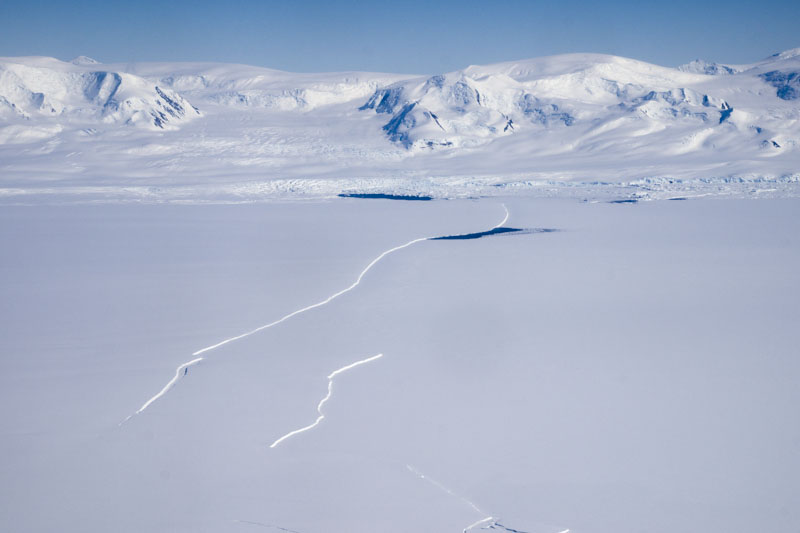 The thin white line marks the northern edge of George VI Ice Shelf, which extends (to the left) for 450 km between Alexander Island (in the background) and Palmer Land. Note the "polynyas" or open water areas at the far side of the ice shelf, denoting upwelling of warmer ocean currents. | 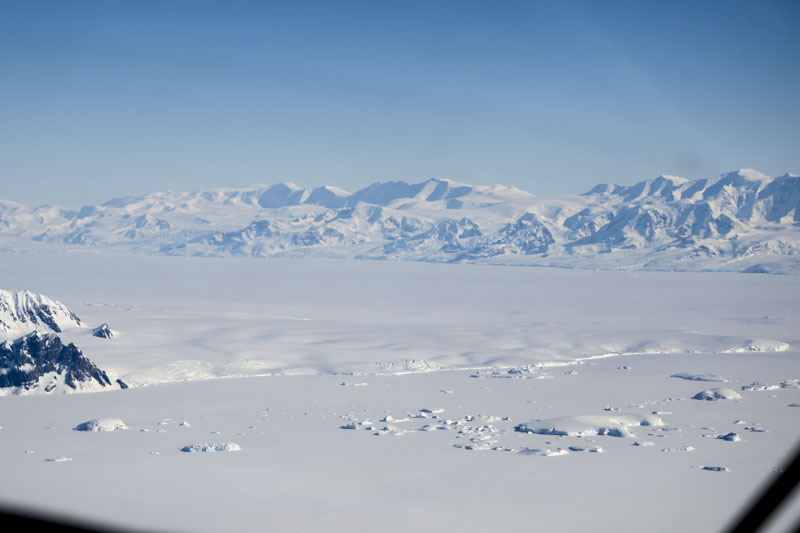 Another view of the northern edge of George VI Ice Shelf with Alexander Island in the background and the eastern margin adjacent to Palmer Land on the left. | 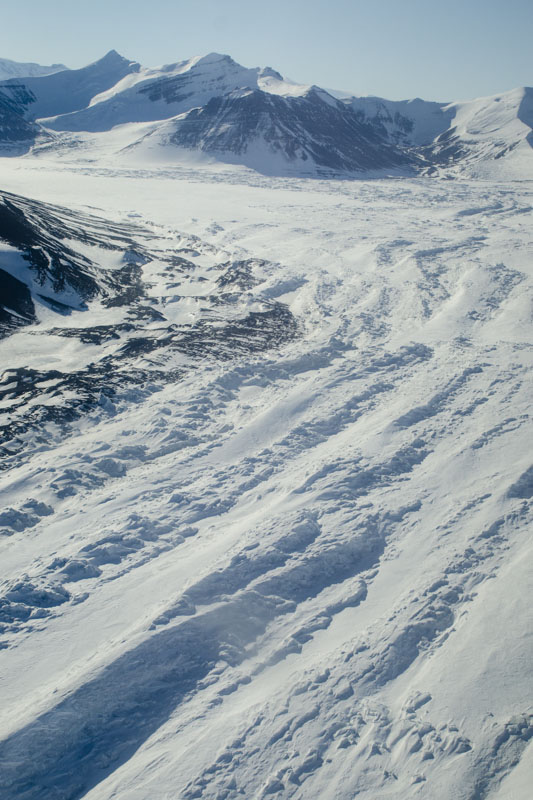 So-called "pressure ridges" at the western edge of George VI Ice Shelf, formed where ice from Palmer Land impinges against Alexander Island at Ablation Lake. These ridges are, in fact, the result of differential ablation of darker and lighter ice. | 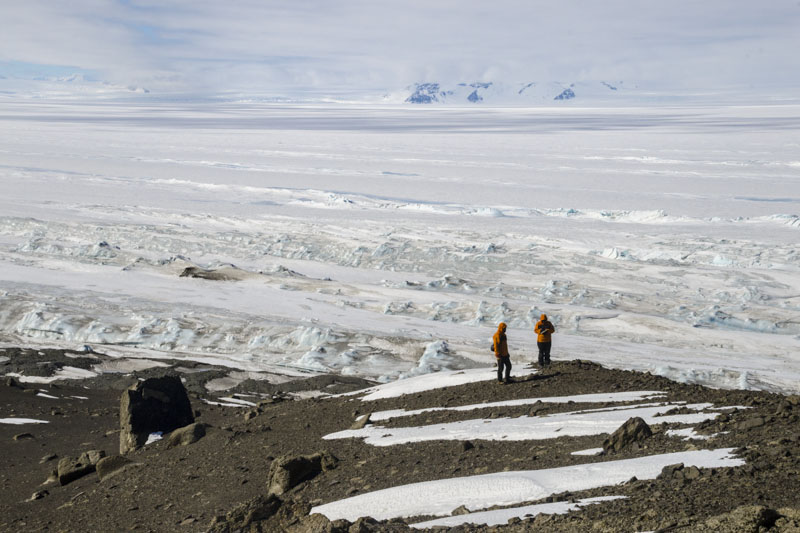 Looking NE across George VI Ice Shelf from near Moutonnée Lake, showing the parallel nature of the ice ridges. |
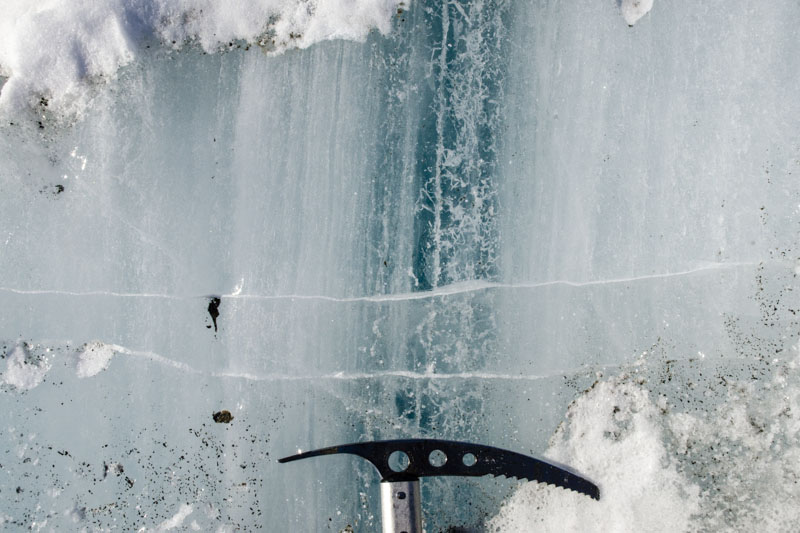 Close up of foliated ice near Ablation Lake. The white and pale blue ice is glacier ice, and the dark blue ice is from the freezing of water-filled crevasses before the ice left Palmer Land and crossed the Sound. | 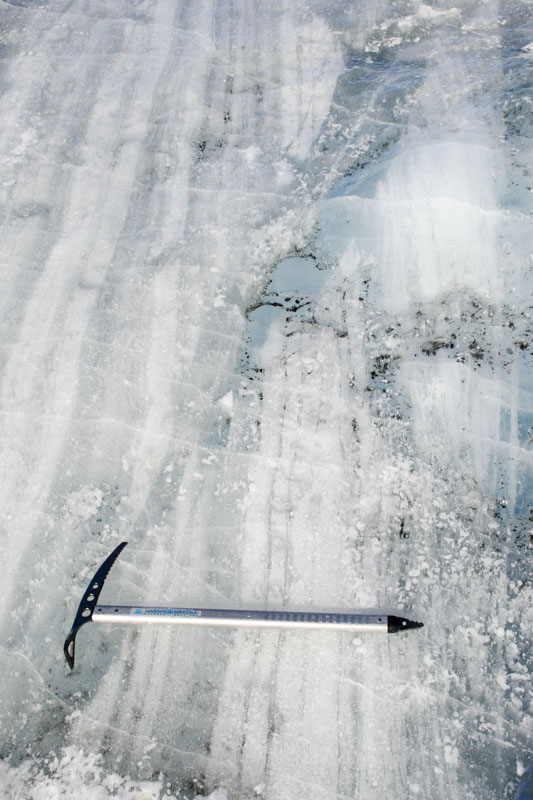 Blue ice vein cutting across regular foliation. It probably represents a water-filled crevasse formed on the ice shelf. | 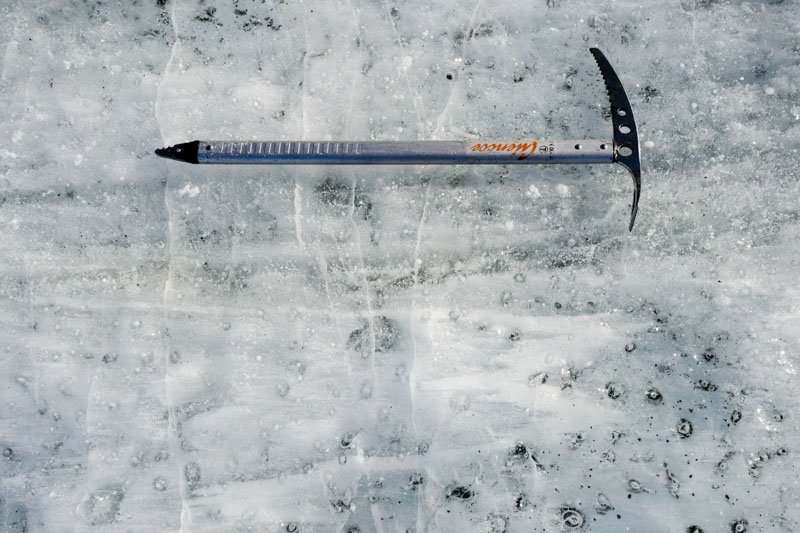 "Similar-style" folding with fold axes parallel to foliation at the eastern margin of the ice shelf. Note the thickening of the white (fine-grained) ice at the fold hinges. | 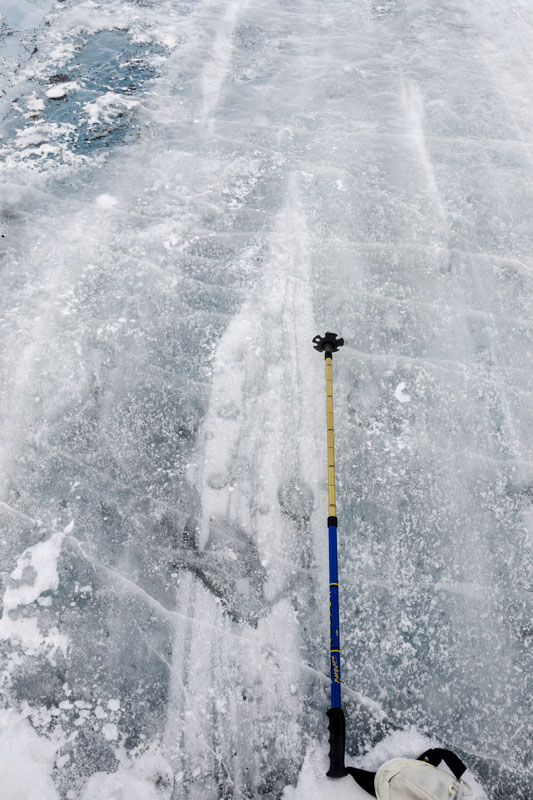 White and grey ice types define an isoclinal fold at the eastern margin of the ice shelf. |
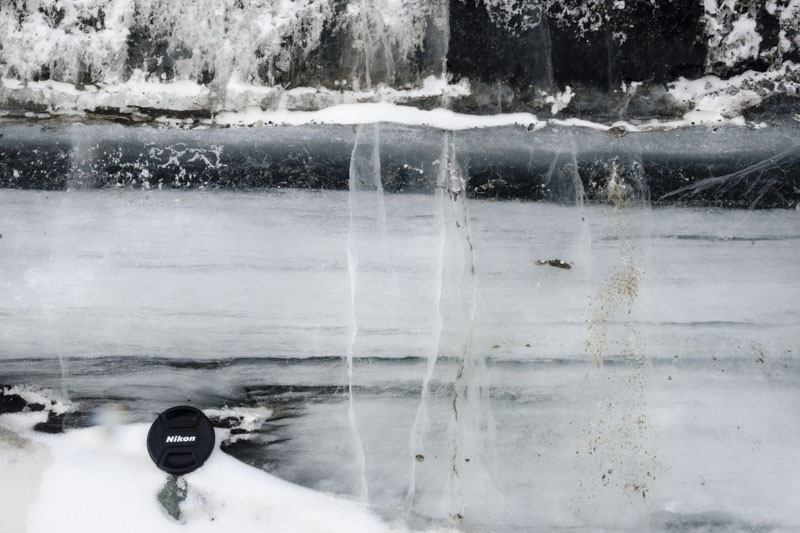 Strongly foliated ice with blackish layers that probably represent basal ice at the eastern margin of the ice shelf. The foliation is cut by small fractures at right angles. | 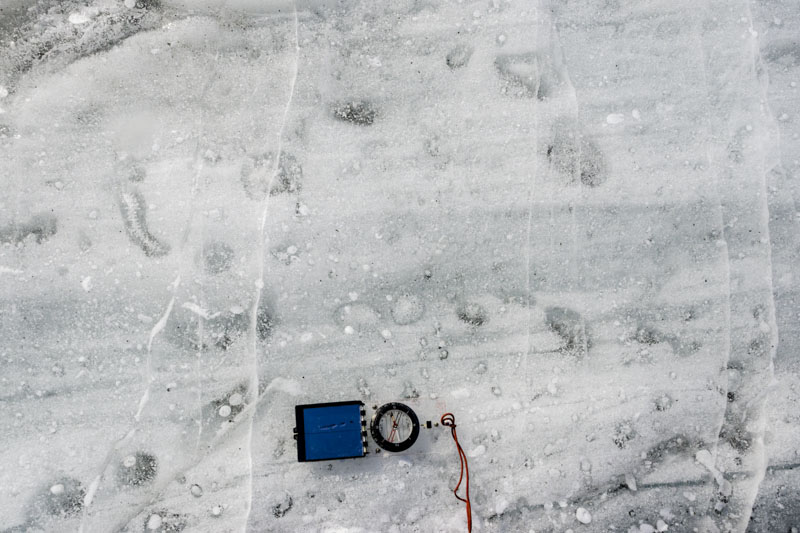 Frozen circular and elongate cryoconite holes in foliated ice at the eastern margin of the ice shelf. | 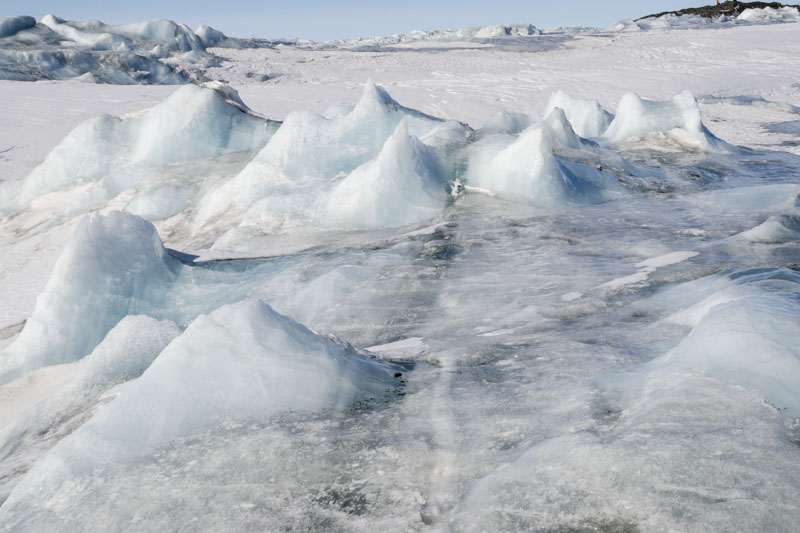 A family of "ice ships" at the eastern margin of the ice shelf. They result from differential ablation of clean ice and ice with a thin veneer of dust, and are so-named because of their resemblance to a ship’s sails. | 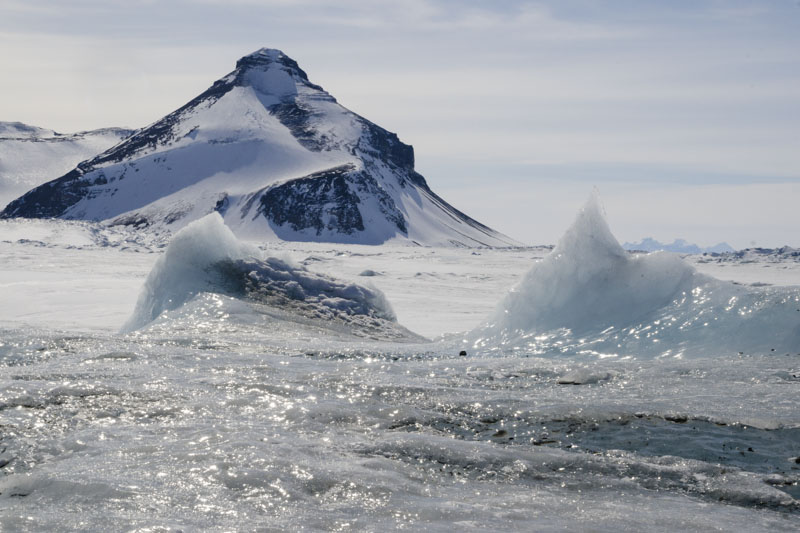 Two ice pinnacles with "glassy" ice, showing the polishing effect of wind and sun. Ablation Point in the background. |
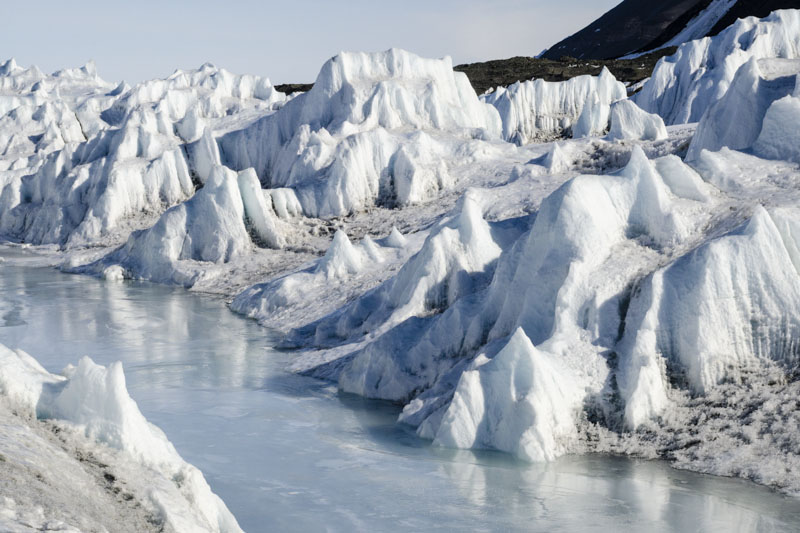 A prominent zone of ice ships and a supraglacial lake, both developed parallel to the foliation, near Moutonnée Lake. | 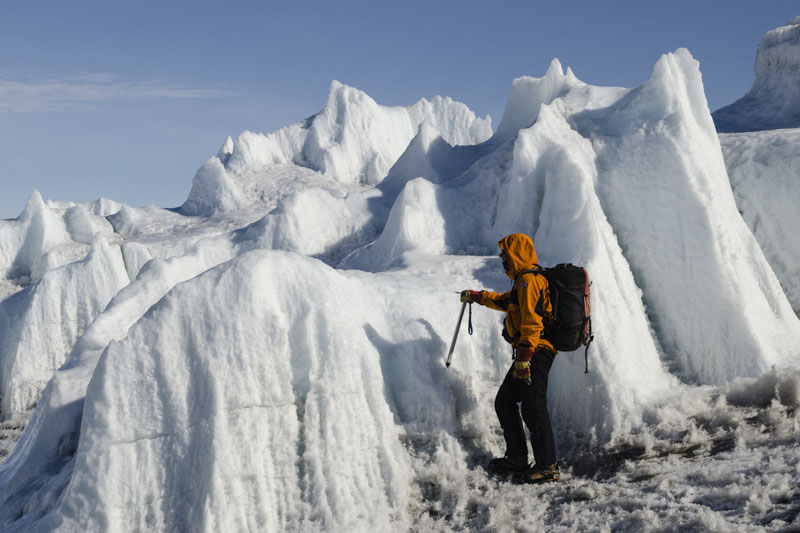 Close up view of ice ships up to 5 metres high. The form of these features is related to the near-vertical foliation. | 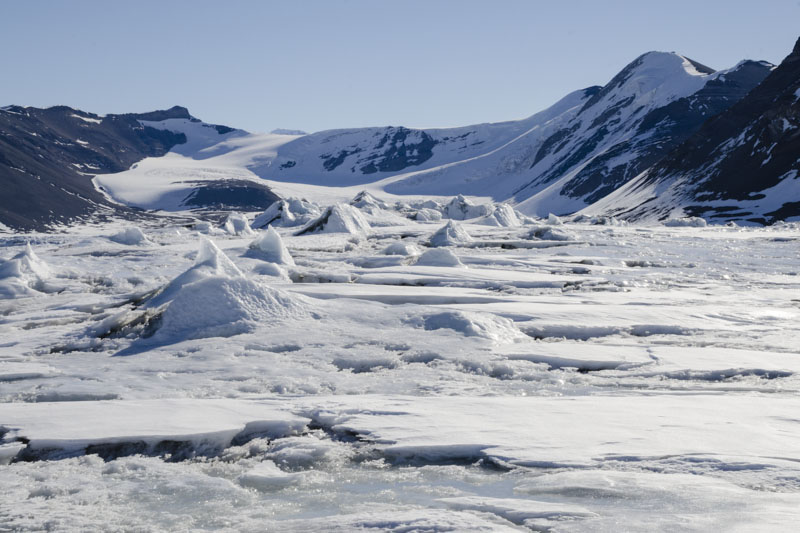 Patchy snow cover between ice ships on the ice shelf, looking into Ablation Valley. | 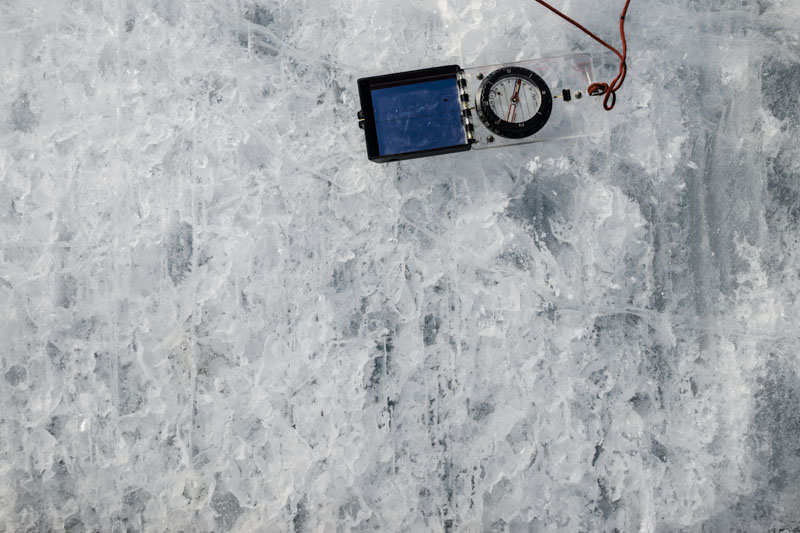 Crystal structure in cross-section of candle ice, formed from freezing of a supraglacial pond, at the eastern margin of the ice shelf. |
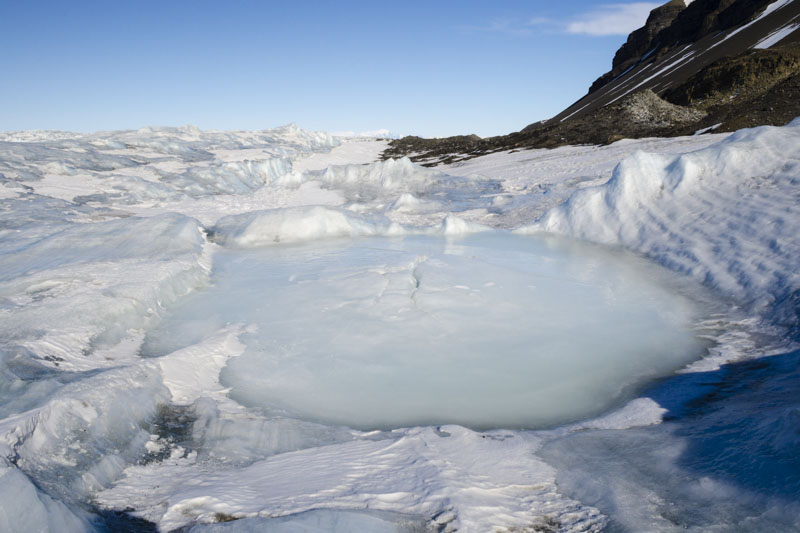 "Ice blister", formed where a pond freezes throughout, accompanied by the ice expanding into a dome and fracturing on top. | 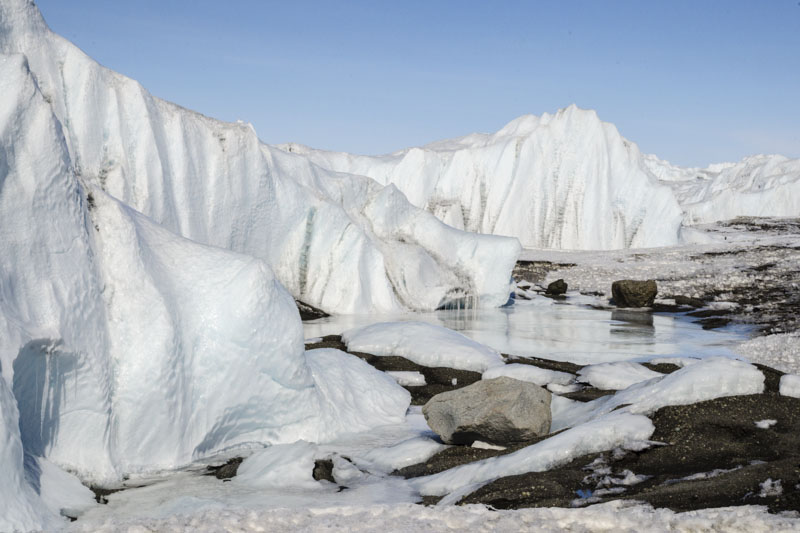 Pond with scattered blocks of granite adjacent to the ice shelf moraine near Moutonnée Lake. | 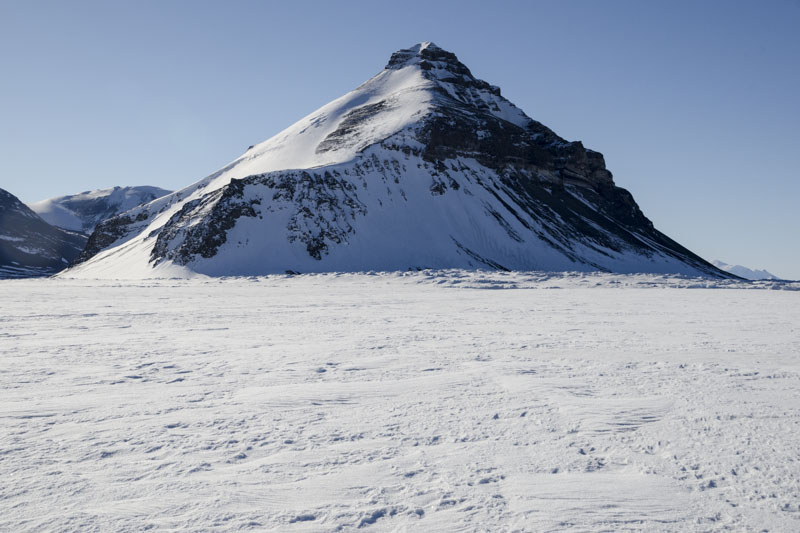 Towards the middle of George VI Ice Shelf, the surface is much less rough, and when smooth like this is suitable for a ski-equipped Twin Otter to land. Ablation Point in the background. | 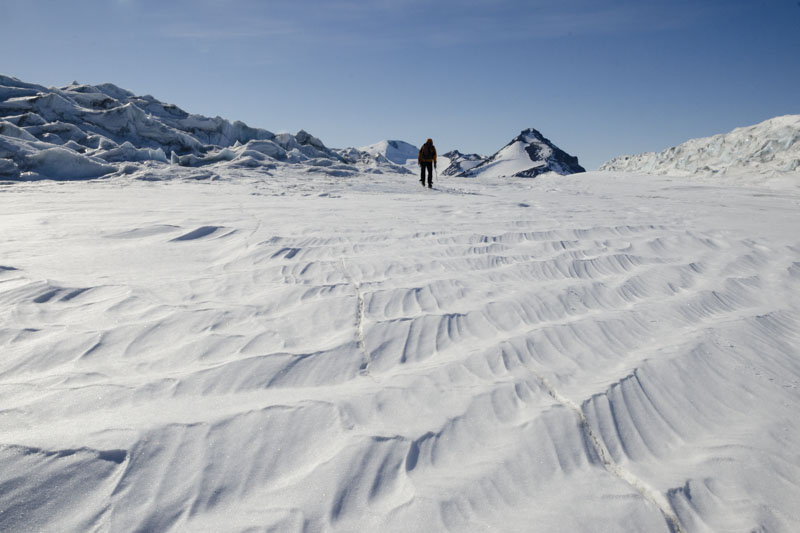 Wind-blow snow dunes called "sastrugi" lie in the hollows between the ice ridges at the eastern margin of the ice shelf. |
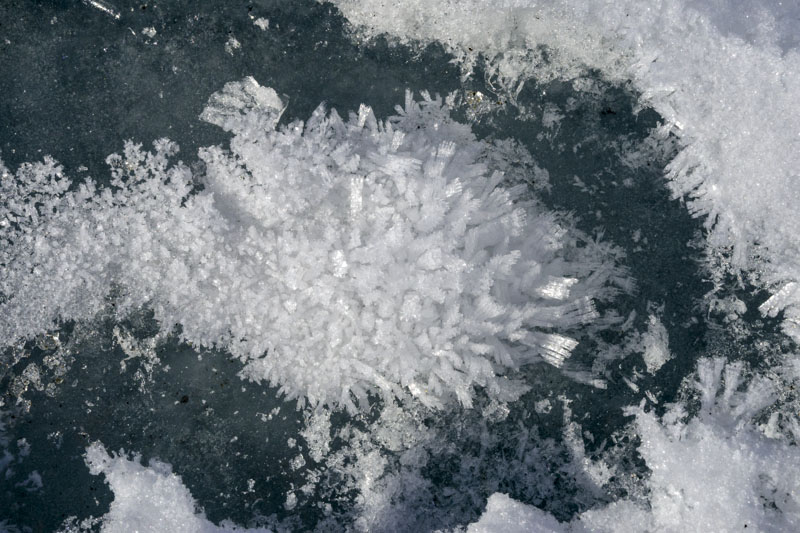 Cluster of "frost flowers" formed when fog crystals condense on the ice-shelf surface. | 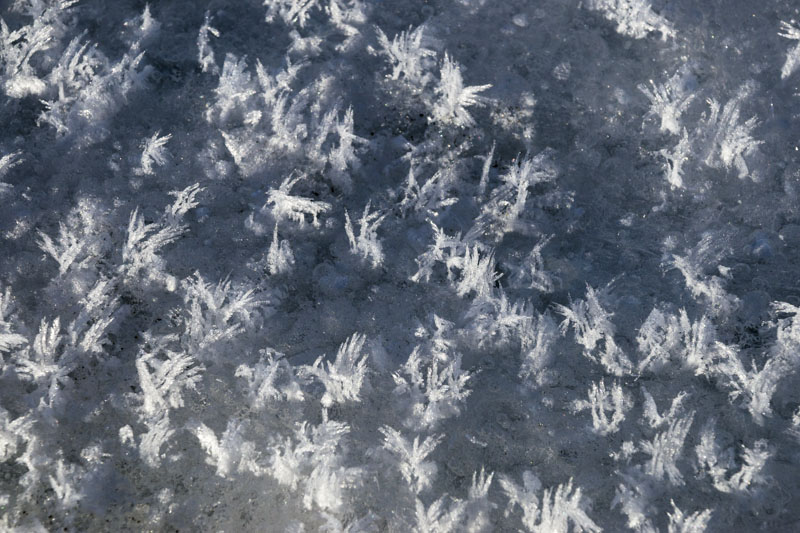 Dispersed frost flowers on the ice-shelf surface, showing their delicate structure. | 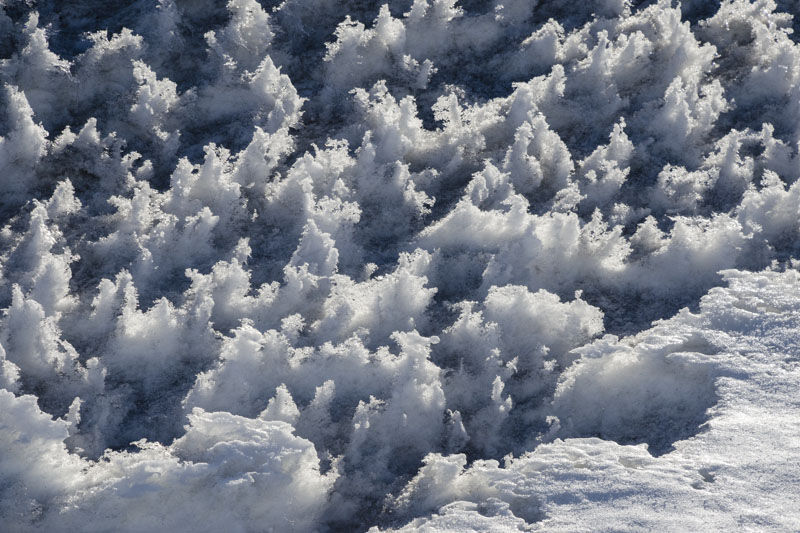 "Nieves penitentes" is a form of snow pinnacle resulting from differential ablation of a lightly dusted snow surface. | 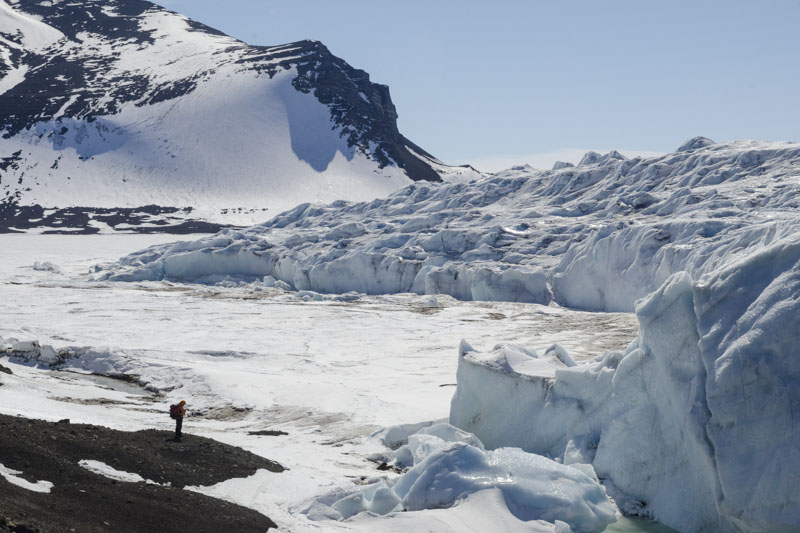 George VI Ice Shelf’s cliff edge where it enters Moutonnée Lake. |
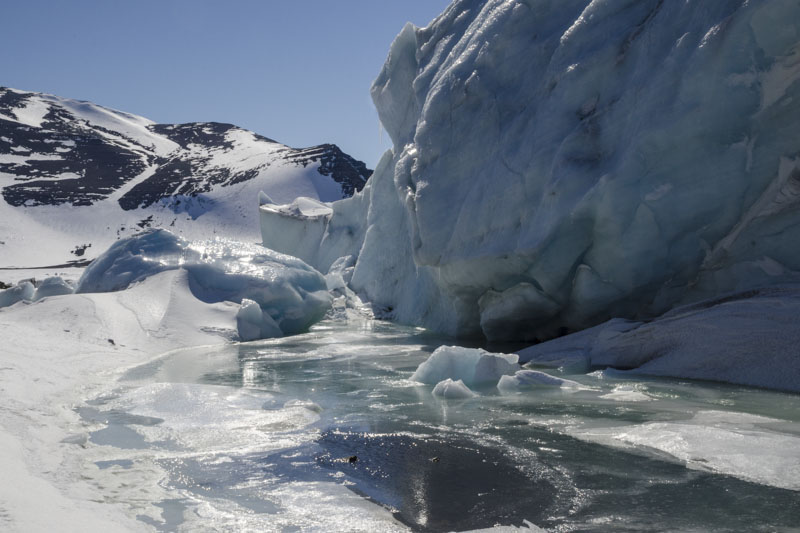 Fallen ice blocks and moat adjacent to the cliff of George VI Ice Shelf. | 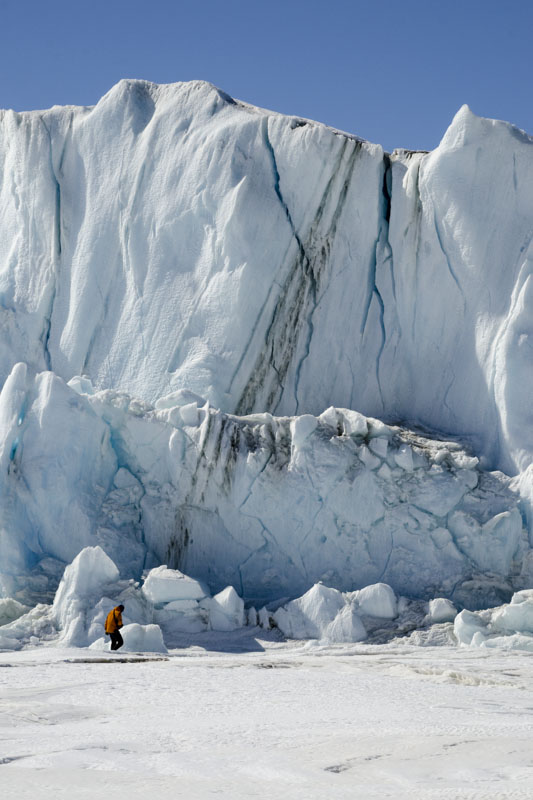 Debris layers parallel to foliation in the cliff of George VI Ice Shelf. | 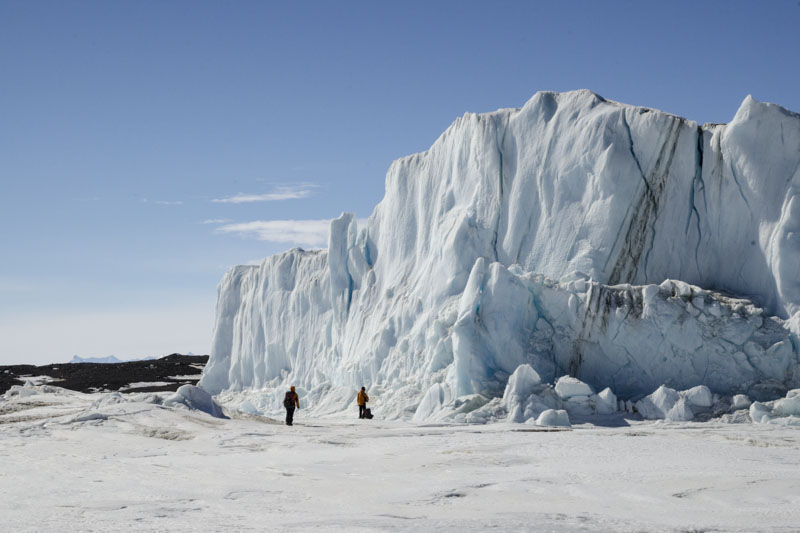 General view of the 15 metre-high cliff of George VI Ice Shelf, with fallen ice blocks on the surface of Moutonnée Lake. | 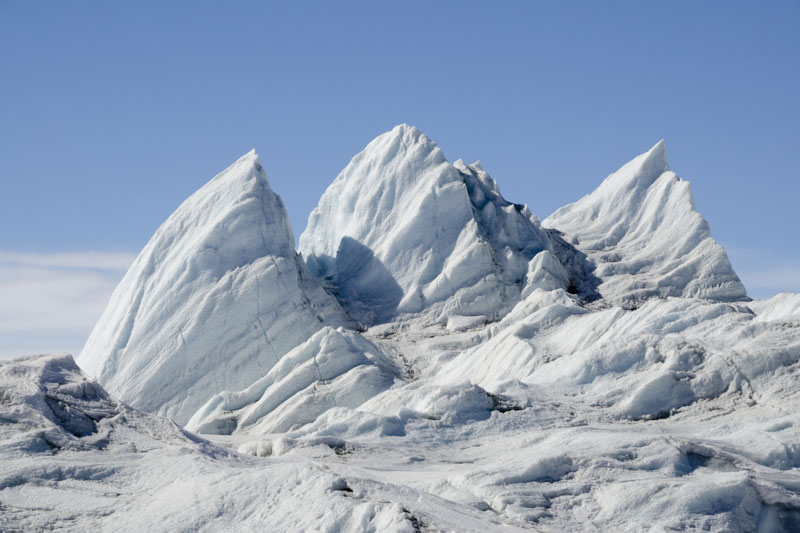 These three towers, several metres high, are exceptionally large examples of ice ships. They overlook Moutonnée Lake. |
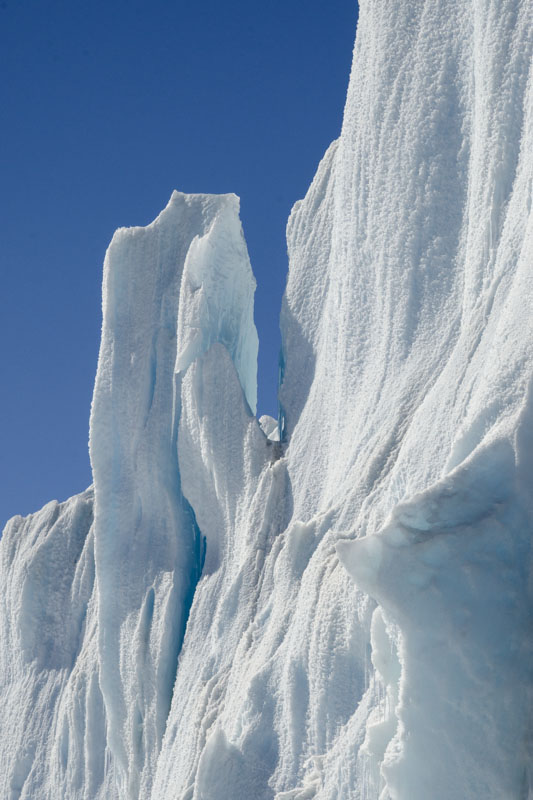 Tower in the ice cliff showing splitting parallel to the foliation. | 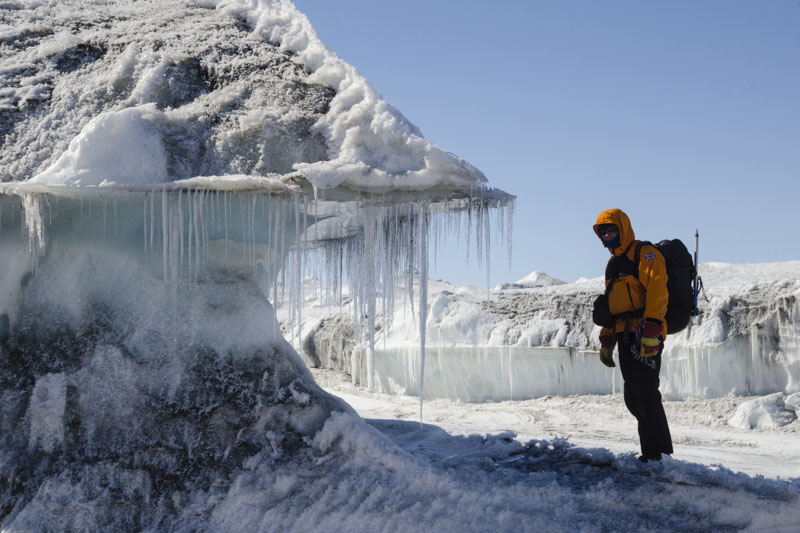 Icicles growing from the top of an undercut knotch which denotes the level of a former supraglacial lake, formed near Moutonnée Lake. | 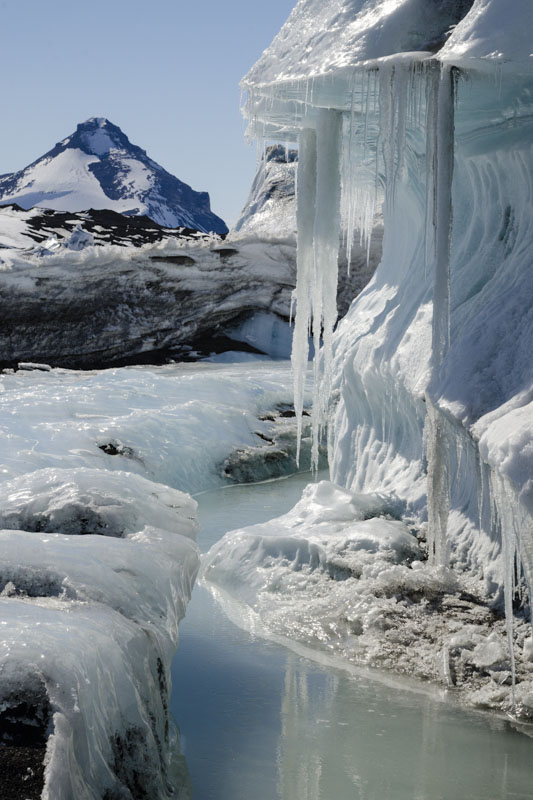 Three-metre-long icicles growing from the former supraglacial lake shoreline, with moat below and Ablation Point in the background. | 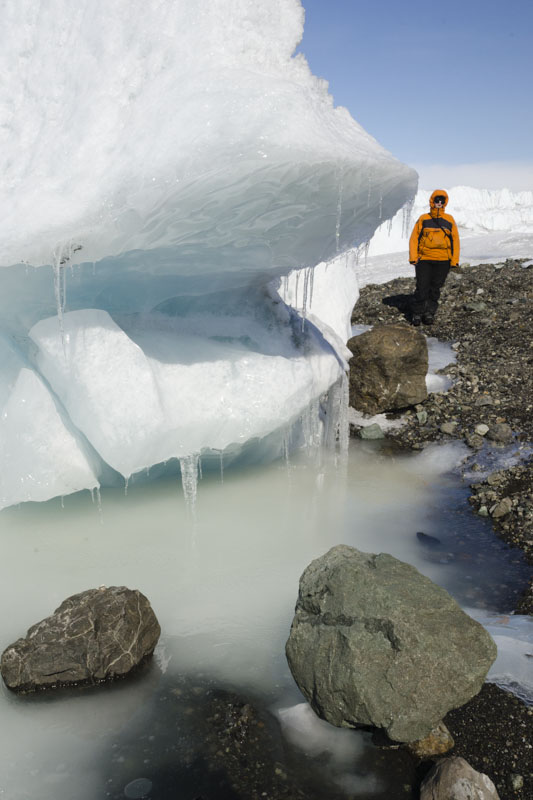 Two lake-shoreline notches, icicles and pond near Moutonnée Lake. The moraine with a few stray boulders lies to the right. |
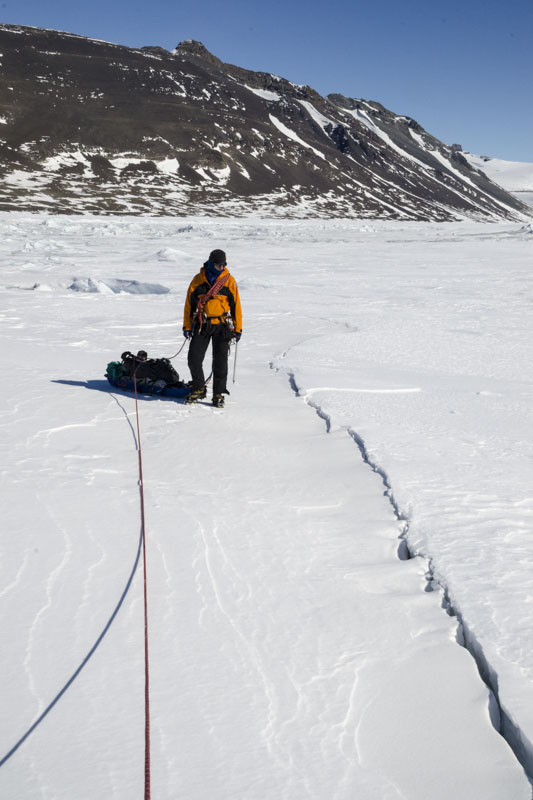 Tide-crack representing a fracture in the ice shelf formed when ice attached to the shore cracks under the influence of tides, despite the 80 km distance from the open sea. | 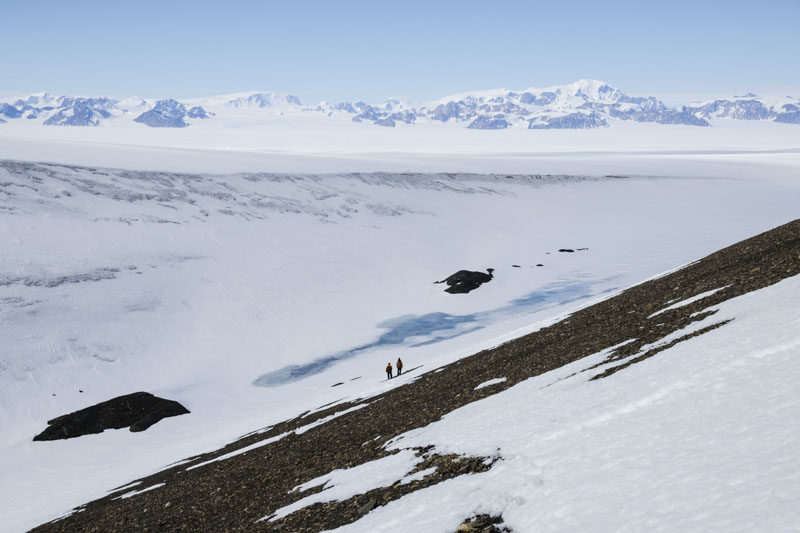 Wind scoop at the edge of George VI Ice Shelf between Fossil Bluff and Belemnite Valley. | 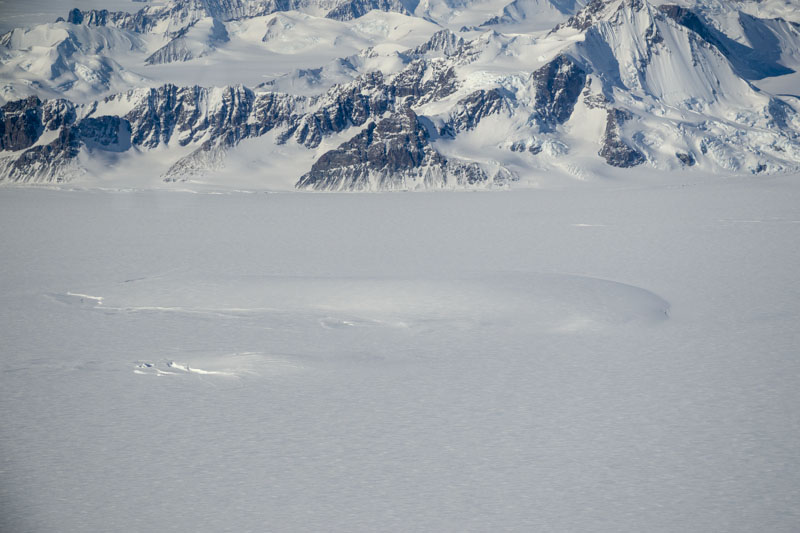 Ice rises in the northern part of George VI Ice Shelf, formed where floating ice touches an elevated area of the sea bed. Palmer Land mountains in the background. | |
| Photos Michael Hambrey, November and December 2012. |